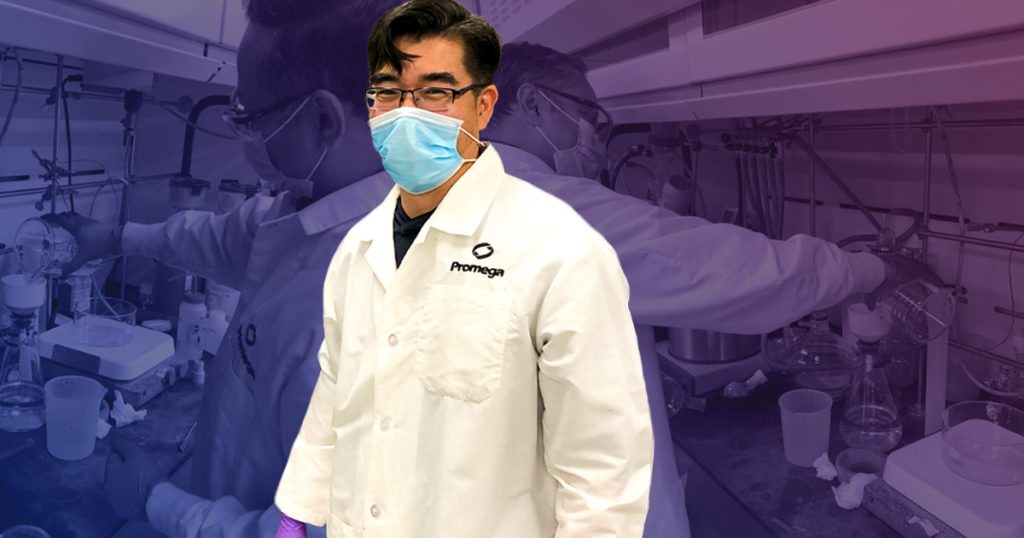Scrolling through the October 6 headlines, enjoying my morning cup of coffee, I came across a piece of news that brought this chemist-turned-science writer a special sort of nerdy joy. The 2021 Nobel Prize in Chemistry had been announced, and I was going to get to write about a subject near and dear to my heart—catalysis and sustainability.
This year’s prize was awarded to Benjamin List and David MacMillan for their work developing asymmetric organocatalysis. With this technique, small organic molecules are used to catalyze, or speed up, certain chemical reactions. The specific “organocatalyst” used can give chemists more control over the structure of the chemical products formed in those reactions.
List and MacMillan first reported these reactions in independent studies in 2000. Now, asymmetric organocatalysis is a foundational tool for building molecules, including medicines like paroxetine (an antidepressant) and oseltamivir (an antiviral).
Catalysis occurs when molecules are used to control and speed up chemical reactions but don’t get incorporated in the final chemical products. Asymmetric organocatalysis is just one subset of catalysis and is joined by other Nobel-recognized advances in the field.
Prior to this year’s prize, the types of catalysts recognized by the Nobel Committee had been made from metals, like palladium. List and MacMillan’s work instead uses small organic compounds as catalysts, hence the name organocatalysis. In List’s original work, the amino acid proline was used as a catalyst, making use of a unit from nature’s own catalysts, enzymes.
Green chemistry “is about changing hearts and minds.”
Cesear Corona, Promega R&D Chemist
There are many reasons chemists are interested in making new catalysts and finding new ways to use them. Using catalysts can make chemical reactions more efficient, letting chemists make products in fewer steps or generate less waste in the process.
Because of these benefits, catalysis is one of the pillars of green chemistry, which is a principle that encourages chemists to make their molecules in a way that is more environmentally sustainable and safe. Some of the other ways to approach green chemistry include making chemical reactions more energy efficient, using and making chemicals that are safer, and finding more renewable resources as a source of reagents. Learn more about the principles of green chemistry principles.
Like most other sustainability efforts, making chemistry greener is a challenge. When chemists try to come up with a way to make a desired chemical product, they might try out dozens of different routes to get there. The route that works “best” might not be all that green.
“I always used to see green chemistry as having a cost,” said Cesear Corona, an R&D chemist at Promega Biosciences (PBI) in San Luis Obispo, California. Now, Corona sees the challenge of making chemistry greener as a way to discover new technologies, be creative, use resources more wisely, and make chemistry safer. He joined Promega’s Green Chemistry team when it formed five years ago.
As one part of Promega’s broader commitment to sustainability, the Green Chemistry Team is working to foster the creativity and support needed to discover greener ways of manufacturing chemical products, including ways to incorporate catalysis.

In one example where catalysis is making a difference, Promega R&D chemist Tetsuo Uyeda has devised a catalytic method to make the core structure of a chemical that shows up in many Promega products in fewer steps. Chemists at PBI are now testing to make sure the product made through the catalytic route performs the same as product made through the established route.
“It’s about changing hearts and minds,” said Corona.
Chemists are not the only ones thinking of ways to “green” their research. Read more about our commitment to sustainability.
Latest posts by Jordan Nutting (see all)
- The Central Dogma of Promega: The Story and Science Behind Our Kit Packaging Design - May 7, 2024
- Silencing the Immunogenicity of AAV Vectors - April 4, 2024
- Discovering Cyclic Peptides with a “One-Pot” Synthesis and Screening Method - February 29, 2024
